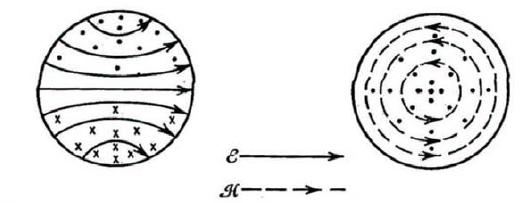Metallic Spherical Resonator Coupling Between Microstrip Lines - HFSS Simulation
The HFSS file is attached, just remove the .doc to run in HFSS.
Hi,
When you use a cavity, yo have to know the "modes" that you excite. If you know the mode, you can consequently use the proper excitation : "magnetic" or "Electric". If the coupling is weak enough, the mode of the coupled cavity are the same that of the non pertubating cavity.
Bye for now.
Hi eraste,
Thanks for your reply, this maybe a silly question but how would i go about finding those modes? I already tried to solve my sphere in HFSS eigenmode however the simulation never solved since it ran for over 24 hours.
Thanks again.
Hello,
What simulation have you choose ? Normally, an eigen solution gives good results. Here is attached what you have to find for the dominant mode after simulation.
Consequently, two loops of current will be sufficent to excite your cavity. Finally you have to match your cavity to your feed line (i suppose 50 ohms). In this case the diameter and the rotation of your loops will able you to have the match. Note that yoou must find a compromise between adaptation , insertion loss (S21) and the Q of the cavity.

Good simulations
